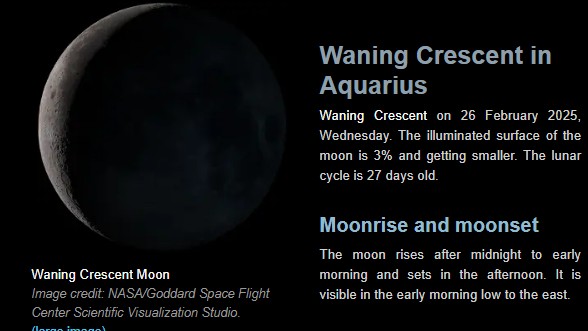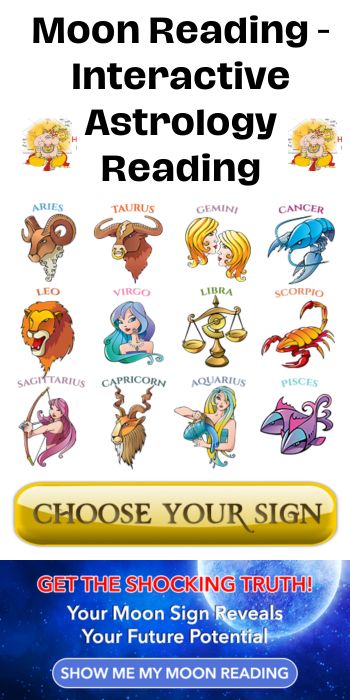Ever wondered what secrets the moon holds, especially on a specific night? On February 26, 2025, the moon will grace our skies in a particular phase, offering unique views and maybe even influencing our lives in subtle ways. This article gives you the lowdown on the moon that night, its astrological vibes, and how to best enjoy the celestial show.
Moon Phase on February 26, 2025
On February 26, 2025, expect a waxing crescent moon. What does that even mean? Well, it’s a phase where the moon appears as a slender, curved sliver of light. It will be a beautiful view, and we can all look forward to spotting it in the night sky.
Visual Characteristics of the Waxing Crescent Moon
Imagine a delicate fingernail clipping of light hanging in the darkness. That’s your waxing crescent moon. Most of its surface seems dark, except for that bright, curved edge. The contrast between light and shadow creates an eye-catching sight, especially against a clear evening sky.
Astronomical Significance of the Phase
The waxing crescent appears as the moon journeys away from the sun in our sky. It’s early in its monthly cycle, after the new moon. As it moves, the amount of reflected sunlight that reaches our eyes increases each night. Light and shadows shift constantly.
Best Time to Observe the Moon on this Date
For the best view, look shortly after sunset toward the western horizon. Binoculars can sharpen the view. A small telescope will bring out lunar details along the terminator. That’s the dividing line between light and shadow.
Astrological Influences of the Moon on February 26, 2025
Astrology claims that the moon’s position affects our moods. The moon’s zodiac sign supposedly colors our emotional experiences. Remember, these are beliefs, not proven facts.
Moon’s Sign and Its General Traits
Let’s imagine the moon is in Taurus on February 26, 2025. Taurus is associated with stability, comfort, and a love for the finer things. People might feel drawn to relaxing activities and sensual pleasures under this sign.
Potential Aspects with Other Planets
What if the moon forms a positive aspect with Venus on this date? Some astrologers might say it enhances relationships and creativity. A challenging aspect with Mars could indicate potential for disagreements or impatience.
Disclaimers Regarding Astrological Interpretations
It’s essential to keep in mind that astrology is not a science. These interpretations are based on ancient beliefs and symbolism. Approach them with an open, yet skeptical, mind.
Observing the Night Sky on February 26, 2025
Viewing conditions and other celestial objects matter too. Clear skies let you enjoy it more.
Best Viewing Locations and Times
Find a spot away from city lights for great stargazing. Parks or rural areas work well. Check the weather forecast beforehand! The moon will likely be visible shortly after sunset, offering a great chance to spot other stars.
Other Visible Celestial Objects
Besides the moon, scan the sky for planets like Mars or Venus. Familiar constellations, such as Orion or Taurus, might also be visible. Stargazing apps can help you identify them.
Impact of Light Pollution
Light pollution washes out the night sky. Escape to darker locations to see more stars. Even shielding your eyes from bright lights helps. The less light, the better the view.
Practical Applications and Cultural Significance
The moon affects more than just our night sky. Its phases relate to tides, gardening, and cultural tales.
Lunar Gardening Tips (If Applicable)
If the waxing crescent aligns with certain gardening beliefs, consider planting leafy greens. Some gardeners believe the moon’s phase affects plant growth. Now is the time to sow seeds.
Tidal Information and Coastal Considerations
The moon’s gravity pulls on Earth’s oceans. Expect relatively lower high tides during the waxing crescent. This is because the moon and sun’s gravitational forces aren’t aligned as much as during a full or new moon.
Lunar Folklore and Cultural Traditions
Many cultures connect the waxing crescent to new beginnings and growth. It often symbolizes hope and potential. Some traditions involve rituals or celebrations tied to the moon’s cycle.
Moon Facts and Trivia
It’s a celestial body with many interesting features.
Basic Lunar Statistics
The moon’s diameter is about 2,159 miles. Its mass is about 1/81st of Earth’s. It orbits about 238,900 miles away on average.
Lunar Exploration History
Humans first walked on the moon during the Apollo 11 mission in 1969. This historic event changed our understanding of the cosmos forever. It pushed the boundaries of science and inspired generations.
Future Lunar Missions
Several countries are planning new lunar missions. These include robotic probes and potential human settlements. The goal is to explore the moon further and maybe even use its resources.
Conclusion
The moon on February 26, 2025, will be a waxing crescent. This is a perfect opportunity to observe its beauty and reflect on its impact. Step outside, enjoy the night sky, and share your experiences! What do you see?



Leave a Reply